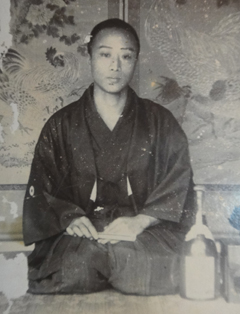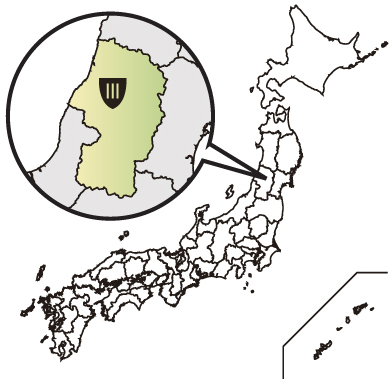An In Depth Guide To "TATENOKAWA"
Volume 1 introduces the "TATENOKAWA" brand and its origins; the brewery history and the natural climate and features of the Shonai Region; it also includes a list of accolades awarded to the brewery.
Volume 1 - The Brand and its Origins; the Shonai Area and Award History

The Origin of the Brand: "TATENOKAWA"
In 1832, when the head of the Uesugi clan first visited the Shonai area, an area facing the sea and surrounded by mountains, he was so amazed by the amount of flat land and quality of the water available that he recommended sake production to first generation Heishiro.
Heishiro started to make sake using water from a spring which he found at the base of a tree in a nearby shrine and serve it to visitors. This sake soon became so popular that visitors requested that he open a sake shop, which started officially trading in 1854.
In 1855, the visiting Daimyo of the Sounai Clan, Sakai Tadakatsu was presented with the sake and in return christened the brand "TATENOKAWA" (English Name: CASTLE BROOK), which comes from the old name for the location of the brewery: Tateyama (Citadel Mountain); A Tate is another word for citadel or castle, of which there were once plenty in the region. Some of the ruins of these castles can be visited in a park open to the public — unfortunately no such brook or river actually exists.

The Region of Shonai, Located in Yamagata Prefecture.
There are around 55 sake breweries in Yamagata Prefecture, 20 of which reside in the Shonai Region, all producing a unique brand of sake from the nature and climate of the region.
TATENOKAWA, Inc. is located in Sakata City on the Japan Sea facing side, at the base of a mountain range that looks out onto the surrounding plains, and makes sake in the winter months. The weather in this part of Yamagata Prefecture is influenced by the sea currents and even in the heart of winter it never freezes over, providing an optimum temperature to make sake.
The surrounding mountain ranges of Mt. Chokai, Gassan and Yudono provide a never-ending supply of good quality water. More importantly, boasting one of the largest expanses of arable land in Japan, the region is blessed with plentiful rice production.
It is perhaps no surprise then that in an area with a population of 30,000 people, the region hosts as many as 20 sake breweries and has become recognised in recent years as one of the representative sake making regions. Furthermore, Sakata is the only city in Japan to include the Chinese characters for sake and ricefield in its name.
In the past, Sakata City thrived as a trading hub for passing cargo ships and was the home of the Homma family, who were the biggest land-owners in Japan up until the restoration at the end of the second world war. The city is perhaps better known as the stage for the NHK soap drama/movie "Oshin" and the Shonai area itself was the setting of the academy award winning movie "Departures".
Award History:
- National Sake Awards - Gold
- North East Japan Sake Awards - Award of excellence, Junmai category.
- Warm Sake Contest - Gold
- Sake Blind Tasting Contest - 2nd recommended sake as chosen by 'New Yorker'
- Golden Masu Awards - Best in Show
- Sake That Tastes Good in a Wine Glass - Gold
- IWC(International Wine Challenge)- Silver Medal in Junmai Ginjo & Junmai Daiginjo category
- US National Sake Awards - Silver
- SAKE COMPETITION 2014 - Entered into upper-tier of Junmai Daiginjo category
- Featured in the 'Japan Typography Annual'

